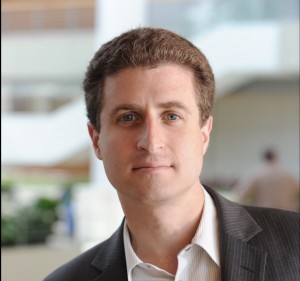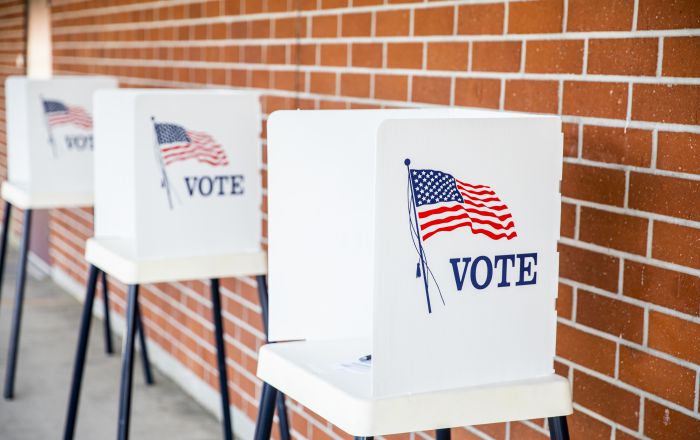New study that looks into the media coverage of climate change finds that special interest groups often take advantage of journalists’ desire to present “both sides” of an issue.

Despite an overwhelming scientific consensus that climate change is real and that it is man-made, many Americans today remain skeptical. According to a Gallup poll released last month, only 69 percent of Americans believe scientific reports of record-high temperatures, and the general public remains almost evenly divided between those who believe climate change is caused by human activity and those who believe it is caused by natural changes in the Earth’s temperatures.
Americans in general are more skeptical of anthropogenic climate change than people from other countries. A 2014 Ipsos MORI poll found that 54 percent of Americans believe that “the climate change we are currently seeing is largely the result of human activity,” compared with 80 percent in France, 72 percent in Germany, and 93 percent in China. Fifty percent of Americans, according to the survey, believe that “the government is just using environmental issues as an excuse to raise taxes,” while only 35 percent disagreed with this statement.
Some of this, perhaps, has to do with the prominent media coverage given to climate change skepticism in US media outlets. While climate change skeptics are largely relegated to the margins of the scientific community, in American media they have been given “roughly equal attention” — according to a 2007 paper by Maxwell T. Boykoff and J. Timmons Roberts — long after the formation of scientific consensus, thereby giving a sense of false balance to a debate that, scientifically speaking, has long been resolved.
A new paper by Jesse M. Shapiro of Brown University seems to suggest that this sort of “balanced” reporting can in fact serve special interests who wish to cast doubt on the scientific consensus on climate change, by adding ambiguity to the debate.
A special emphasis on neutrality is a unique characteristic of American journalism. However, while in the past century concepts like objectivity, neutrality, and balance have been held up as tenets of quality journalism, the last few years have seen fervent debates in media circles about the role of journalistic balance, with a growing number of voices claiming that neutrality is not only an unattainable ideal (since even the most rigorous journalists tend to have biases) but can also be detrimental. The notion of neutrality, the argument goes, and the standard journalistic practice of seeking balance by giving equal weight to two sides of every debate without forming a judgment, often creates a distorted picture that favors powerful interests.
Shapiro’s study seems to support the view that media balance can in fact serve special interests. The paper studies the interplay between actions taken by special interests who wish to influence public opinion and the reputational concerns of journalists, through the prism of climate change. The decision to focus on climate change as an example of how special interest groups can affect public opinion through the media, explains Shapiro, came about as a result of the rise in climate change skepticism in the US. “I began thinking about this topic when polling data started showing a decline in the public acceptance of climate change,” he says in an interview conducted via email. “The trend did not seem to be driven by any new scientific evidence or data. Yet the data were showing not only that many Americans did not accept anthropogenic climate change but that the proportion was rising. I found these facts puzzling.”
In order to examine the ways in which the media, the scientific community, and special interest groups all influence the information communicated to the public during policy debates, Shapiro created a model that simulates the interactions between these groups within the debate over climate change.
In Shapiro’s model, two interest groups attempt to influence public opinion in two given situations, one where the facts are ambiguous (each side has facts that support its case) and one in which the evidence is not ambiguous and the evidence clearly lies with one side.
The journalist in the model knows the facts and may report all of them, but he is hindered from doing so by two things: the ability of special interests to hire experts that present a claim to the journalist that, if reported outright, will not be recognized by voters as non-factual; and the reputational concerns of journalists who fear they might appear biased and who therefore have an interest in minimizing the perception that they are captured by either side. Together, notes Shapiro, these two things “create a bias towards reporting that the evidence is ambiguous even when it is not.”
Special interests who wish to affect public perception of a scientific issue use this bias, Shapiro notes in the paper, and will often “undertake organized efforts to influence media reporting.” For instance, they might hire scientific experts, armed with peer-reviewed papers that contradict the conventional view of climate scientists, to brief leading journalists. The purpose isn’t necessarily to convince journalists that they’re right but to cast ambiguity on issues where most scientists see none. According to Shapiro, “often special interests have focused on casting doubt on an existing consensus rather than taking a starkly different view. For example, it might be easier to argue that the health consequences of secondhand smoke are not fully understood than to argue that there are definitely none.”
The problem is not that journalists are not informed – quite the opposite. Even when journalists are perfectly informed, the paper shows, the public can remain uninformed due to the reptuational concerns of journalists who, for fear of appearing biased, give disproportionate weight to the views promoted by special interest groups.
Fearing that they will appear biased if they don’t give these claims equal weight, journalists report both sides of an issue, even when the science clearly supports only one side. “What’s important is for special interests to make advocates or evidence on their side of an issue readily available to the news media,” says Shapiro. “From there, the desire of journalists to tell b
oth sides of the story does the rest of the work.”
The reputational concerns of journalists, therefore, help make their reporting uninformative. In that way, neutrality (taking the form of a fear of appearing captured) opens the door to influence by special interests and may act as its own form of capture.
“If I am a journalist concerned with appearing neutral, I can convince you of my neutrality by carefully reporting the views of both sides of an issue. In a case like climate change, where there is a clear scientific consensus on at least some basic premises, this kind of balanced reporting can be misleading. So, you have a situation where journalists trying to avoid seeming biased actually create a kind of bias in their reporting,” says Shapiro.
Obsessed with appearing unbiased, journalists do not necessarily present the facts of the matter (for instance, that 97 percent of scientists agree that climate change is man-made) but instead try to create a false sense of balance.
“In my account, journalists aren’t captured in the sense of being in the pocket of special interests or having a personal agenda, but rather special interests exploit what they know about journalists’ incentives to get the kind of coverage that they want. And, as a result, citizens don’t get a clear picture of the facts,” says Shapiro.
Shapiro’s conclusions echo arguments made by Maxwell and Jules Boykoff and others that balance often acts as a form of bias. A typical TV debate on climate change, for instance, often pits two opposing scientists against one another, with one usually representing the scientific consensus and the other often representing the views of interest groups that resist environmental policies like carbon taxes. Viewers who are not scientifically literate might come out thinking that the scientific community is equally divided between climate change believers and climate change deniers, and as a result they might be less informed about which of the two opposing views is more accurate.
Climate change is far from the only example of a polarized debate in which media objectivity serves special interests who wish to affect public opinion. Neutrality has been synonymous with journalistic practice pretty much since the advent of professional journalism, and since the (now-defunct) Fairness Doctrine was first introduced in 1949, balanced reporting has become the standard of every televised debate.
Special interests have used media neutrality to their advantage in the past, notes Shapiro. Newspapers like the New York Times did not stop “routinely quoting Tobacco Institute representatives to provide the ‘other side’ of the smoking-cancer link” until the late 1970s. Scientific studies had overwhelmingly proven such a link existed by then, but by quoting tobacco industry representatives, newspapers were able to avoid appearing like they had an anti-smoking bias.
In the late 1980s, in light of rising concerns over the potential health dangers of secondhand smoking, tobacco companies tried to influence the media and legislators by using tactics similar to the ones employed by the fossil fuels lobby today. Some of these tactics were described in a 2001 paper by Jacqui Drope and Simon Chapman: the tobacco industry, they write, “built up networks of scientists sympathetic to its position that environmental tobacco smoke is an insignificant health risk.” Tobacco firms funded research projects that appeared in scientific journals and newspapers, and assembled groups of academic experts who were expected to assist the industry by making media appearances and critiquing “adverse” research.
“I think that shows that the strategies modeled in the paper are not hypothetical: they are real tactics that have been employed by special interests in the past,” says Shapiro.
While climate change is an extreme example, a similar pattern wherein media neutrality can serve special interests can be seen in many policy debates, such as health care. “I think there are lots of examples with a similar dynamic among media, special interests, and public opinion. These include the debate over the connection between vaccines and autism, and the debate over the effects of genetically modified foods,” says Shapiro.
The situation, he notes, improves somewhat if journalists make their partisan leanings or political preferences known to the public. “The reason is that if I am known, say, to be Republican, then if I come out and say that the science is clear that there is anthropogenic climate change, it is hard to dismiss that as resulting from a personal bias. So I can afford to take a stand in some cases without jeopardizing my reputation. In the US, it is fairly rare for the same person to do both news and commentary at least for the same outlet, but in other countries this is more common. It could be that if journalists were more open about their personal opinions they could also be more accurate in reporting the news.”
Disclaimer: The ProMarket blog is dedicated to discussing how competition tends to be subverted by special interests. The posts represent the opinions of their writers, not those of the University of Chicago, the Booth School of Business, or its faculty. For more information, please visit ProMarket Blog Policy.






